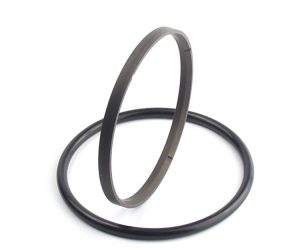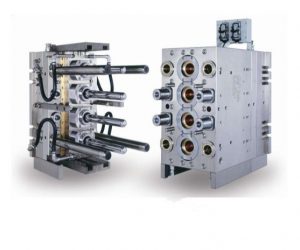The "flash" in injection molding refers to excess material that escapes from the mold cavity and forms a thin layer or protrusion along the parting line of the mold. It is a common defect in the molding process and can be caused by various factors, including both mold-related and machine-related issues. Let's explore how both the mold and machine clamping force can contribute to flash formation:
- Mold-Related Factors:
a. Poor Mold Design: Inadequate clamping force can result from a poorly designed mold, leading to gaps or misalignments between mold components. These gaps allow molten plastic to escape during injection, causing flash.
b. Poor Mold Construction: A poorly constructed or damaged mold may not maintain proper alignment during injection, leading to flash formation.
c. Insufficient Mold Clamping Force: If the clamping force applied to the mold is insufficient, the mold may not remain securely closed during injection, causing flash. - Machine-Related Factors:
a. Inadequate Clamping Force: If the injection molding machine's clamping force is not sufficient to hold the mold closed during injection, flash can occur.
b. Worn or Damaged Machine Components: Worn or damaged machine components, such as the clamping mechanism or toggle system, can result in reduced clamping force, leading to flash. - Process-Related Factors:
a. Injection Pressure: Excessive injection pressure can cause the mold to slightly open during injection, leading to flash formation.
b. Injection Speed: Injecting the molten plastic too quickly can increase the likelihood of flash as it may push the mold apart.
To address flash issues, manufacturers should consider the following steps:
- Optimize Mold Design: Work with experienced mold designers to ensure the mold design is robust and capable of withstanding the injection pressures without leakage.
- Regular Mold Maintenance: Regularly inspect and maintain the mold to ensure all components are in good working condition, and there are no gaps or misalignments.
- Check Clamping Force: Ensure that the injection molding machine's clamping force is appropriate for the mold being used. If necessary, adjust the clamping force settings accordingly.
- Process Optimization: Optimize the injection molding process, including injection parameters like pressure and speed, to prevent excessive forces that could lead to mold opening.
- Monitor Flash Formation: Regularly inspect molded parts for flash and identify the root causes of any occurrences. Adjust the process parameters or address any mold-related issues as needed.
By addressing mold and machine clamping force-related issues and optimizing the injection molding process, manufacturers can minimize or eliminate flash formation and produce high-quality molded parts.
During the injection mold process, flash (also known as overflow, flaring, burr, etc.) may occur. The flash mostly occurs at the opening and closing position of the mold, such as the parting surface of the moving mold and the static mold, the sliding fitting part of the slider, the absolute clearance of the insert, the pin hole, etc. The flash is largely caused by the failure of the mold or machine clamping force.
Some specific reasons are summarized:
- If the maximum clamping force of the machine is not enough, the machine with enough clamping force shall be selected. The clamping force is reduced due to the wear of the clamping machine hinge or the wear of the sealing element of the clamping cylinder and the occurrence of oil dripping or backflow. If the actual temperature is too high due to out of control heating system, check the thermocouple and heating coil for problems.
- Several situations and solutions of "flash" generated by injection mold:
(1) The uneven distribution of the mold cavity or the insufficient parallelism of the mold cavity cause the unbalanced stress, which causes local flash, and local dissatisfaction. The runner should be placed at the center of mass symmetry as far as possible without affecting the integrity of the parts.
(2) When the force on the moving components and sliding core in the die is unbalanced, flash will be caused.
(3) When the mold has poor exhaust, the pressurized air will cause the parting surface of the mold to expand and flash. A good exhaust system should be set up, or an exhaust ditch should be dug on the parting surface.- If the fluidity of plastic is too high or too much lubricant is added, the pressure, speed, temperature, etc. should be appropriately reduced to reduce the amount of lubricant used. If necessary, the plastic with low fluidity should be selected.
- Injection mold processing and adjustment:
- (1) If the set temperature, pressure and speed are too high, segmented injection shall be adopted. Excessive injection time, pressure holding time and feeding amount will cause flash.
(2) During adjustment, the hinge of the mold locking machine is not straight, or the mold adjusting nut often moves when opening and locking the mold, resulting in insufficient clamping force and flash.
(3) The parallelism between the regulating head and the two poles is not enough or the regulated system pressure is too large. - Reasons for repeated occurrence of flash and part dissatisfaction of injection mold:
- (1) When the particle size of plastic raw materials is uneven, the feeding amount will be uncertain.
(2) The excessive wear of the rubber overshoot head, rubber overshoot ring and rubber overshoot washer of the screw may cause flash or dissatisfaction due to the sliding and backflow of molten materials between the screw and the barrel.
(3) The cooling system at the inlet fails, causing the feed to be adjusted.
(4) Inadequate filling amount set by the charging barrel, that is, too small buffer pad will cause flash or insufficient parts due to more and less feeding time.
What causes flash in injection molding?
Flash in injection molding occurs due to the leftover molten plastic that extrudes from the mold cavity onto the part’s surface. The primary causes of flash include low clamp force, excess injection pressure, improper alignment of mold plates, and the use of inadequate molding materials.
What is the clamping force for injection molding?
The clamping force for injection molding varies depending on various factors such as the part size, material being used, mold design, and injection pressure. Higher clamping force is needed for larger parts, thicker materials, or those that require high injection pressure. Generally, most injection molding machines have a clamping force ranging from 10 tons to 5000 tons.
What is flash defect in molding?
The flash defect in molding refers to the imperfection caused when molten plastic extrudes from the mold cavity, resulting in excess material on the part’s surface. Flash can affect the part’s aesthetic appeal, functionality, mechanical properties, and durability, leading to product failure and quality issues.
How do you prevent flash for injection molding?
During the injection molding process, there are various strategies that can effectively prevent the occurrence of flash phenomenon. This includes increasing clamping force, reducing injection pressure, ensuring correct alignment of mold plates, and selecting appropriate molding materials. In addition, technologies such as gate trimming, mold ventilation, and advanced mold design can further reduce the occurrence of flash.



